Yizhang Xia
An Evolutionary Network Architecture Search Framework with Adaptive Multimodal Fusion for Hand Gesture Recognition
Mar 27, 2024Abstract:Hand gesture recognition (HGR) based on multimodal data has attracted considerable attention owing to its great potential in applications. Various manually designed multimodal deep networks have performed well in multimodal HGR (MHGR), but most of existing algorithms require a lot of expert experience and time-consuming manual trials. To address these issues, we propose an evolutionary network architecture search framework with the adaptive multimodel fusion (AMF-ENAS). Specifically, we design an encoding space that simultaneously considers fusion positions and ratios of the multimodal data, allowing for the automatic construction of multimodal networks with different architectures through decoding. Additionally, we consider three input streams corresponding to intra-modal surface electromyography (sEMG), intra-modal accelerometer (ACC), and inter-modal sEMG-ACC. To automatically adapt to various datasets, the ENAS framework is designed to automatically search a MHGR network with appropriate fusion positions and ratios. To the best of our knowledge, this is the first time that ENAS has been utilized in MHGR to tackle issues related to the fusion position and ratio of multimodal data. Experimental results demonstrate that AMF-ENAS achieves state-of-the-art performance on the Ninapro DB2, DB3, and DB7 datasets.
Multiple Population Alternate Evolution Neural Architecture Search
Mar 11, 2024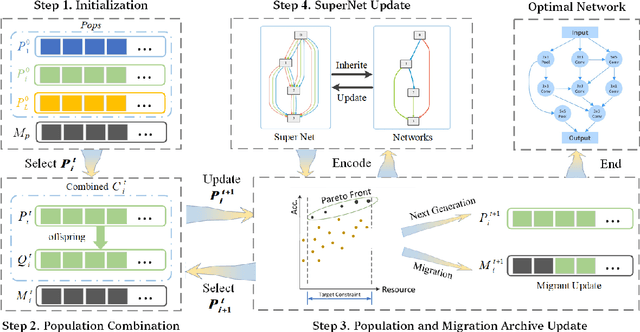
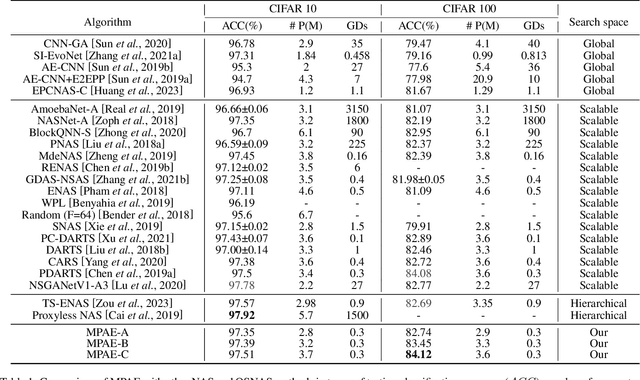

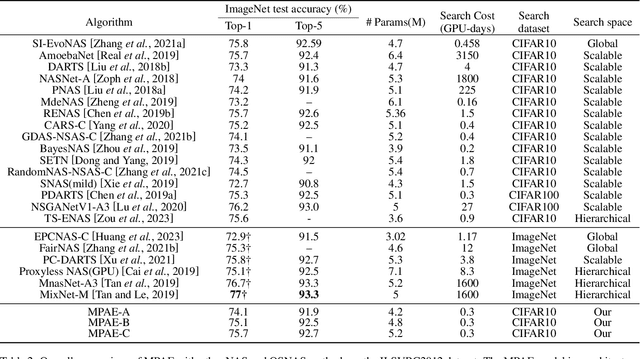
Abstract:The effectiveness of Evolutionary Neural Architecture Search (ENAS) is influenced by the design of the search space. Nevertheless, common methods including the global search space, scalable search space and hierarchical search space have certain limitations. Specifically, the global search space requires a significant amount of computational resources and time, the scalable search space sacrifices the diversity of network structures and the hierarchical search space increases the search cost in exchange for network diversity. To address above limitation, we propose a novel paradigm of searching neural network architectures and design the Multiple Population Alternate Evolution Neural Architecture Search (MPAE), which can achieve module diversity with a smaller search cost. MPAE converts the search space into L interconnected units and sequentially searches the units, then the above search of the entire network be cycled several times to reduce the impact of previous units on subsequent units. To accelerate the population evolution process, we also propose the the population migration mechanism establishes an excellent migration archive and transfers the excellent knowledge and experience in the migration archive to new populations. The proposed method requires only 0.3 GPU days to search a neural network on the CIFAR dataset and achieves the state-of-the-art results.
G-EvoNAS: Evolutionary Neural Architecture Search Based on Network Growth
Mar 05, 2024Abstract:The evolutionary paradigm has been successfully applied to neural network search(NAS) in recent years. Due to the vast search complexity of the global space, current research mainly seeks to repeatedly stack partial architectures to build the entire model or to seek the entire model based on manually designed benchmark modules. The above two methods are attempts to reduce the search difficulty by narrowing the search space. To efficiently search network architecture in the global space, this paper proposes another solution, namely a computationally efficient neural architecture evolutionary search framework based on network growth (G-EvoNAS). The complete network is obtained by gradually deepening different Blocks. The process begins from a shallow network, grows and evolves, and gradually deepens into a complete network, reducing the search complexity in the global space. Then, to improve the ranking accuracy of the network, we reduce the weight coupling of each network in the SuperNet by pruning the SuperNet according to elite groups at different growth stages. The G-EvoNAS is tested on three commonly used image classification datasets, CIFAR10, CIFAR100, and ImageNet, and compared with various state-of-the-art algorithms, including hand-designed networks and NAS networks. Experimental results demonstrate that G-EvoNAS can find a neural network architecture comparable to state-of-the-art designs in 0.2 GPU days.
Combining Kernelized Autoencoding and Centroid Prediction for Dynamic Multi-objective Optimization
Dec 02, 2023Abstract:Evolutionary algorithms face significant challenges when dealing with dynamic multi-objective optimization because Pareto optimal solutions and/or Pareto optimal fronts change. This paper proposes a unified paradigm, which combines the kernelized autoncoding evolutionary search and the centriod-based prediction (denoted by KAEP), for solving dynamic multi-objective optimization problems (DMOPs). Specifically, whenever a change is detected, KAEP reacts effectively to it by generating two subpopulations. The first subpoulation is generated by a simple centriod-based prediction strategy. For the second initial subpopulation, the kernel autoencoder is derived to predict the moving of the Pareto-optimal solutions based on the historical elite solutions. In this way, an initial population is predicted by the proposed combination strategies with good convergence and diversity, which can be effective for solving DMOPs. The performance of our proposed method is compared with five state-of-the-art algorithms on a number of complex benchmark problems. Empirical results fully demonstrate the superiority of our proposed method on most test instances.
TS-ENAS:Two-Stage Evolution for Cell-based Network Architecture Search
Oct 14, 2023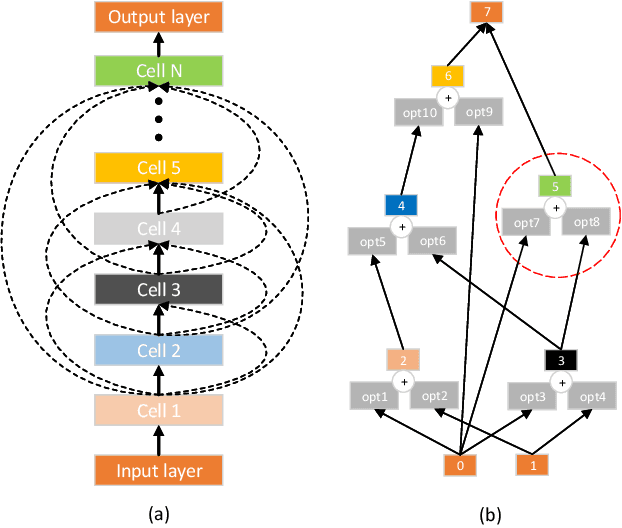
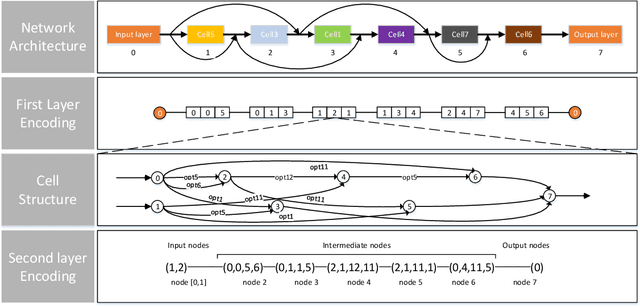
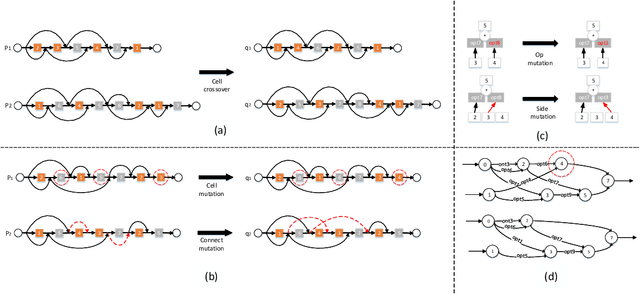
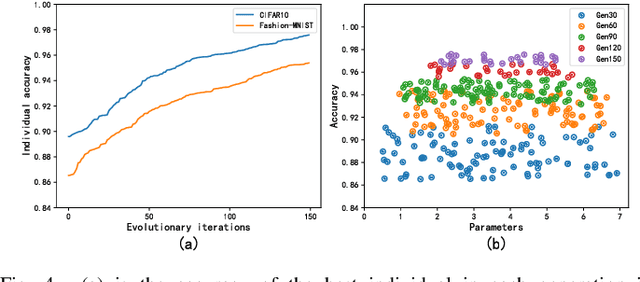
Abstract:Neural network architecture search provides a solution to the automatic design of network structures. However, it is difficult to search the whole network architecture directly. Although using stacked cells to search neural network architectures is an effective way to reduce the complexity of searching, these methods do not able find the global optimal neural network structure since the number of layers, cells and connection methods is fixed. In this paper, we propose a Two-Stage Evolution for cell-based Network Architecture Search(TS-ENAS), including one-stage searching based on stacked cells and second-stage adjusting these cells. In our algorithm, a new cell-based search space and an effective two-stage encoding method are designed to represent cells and neural network structures. In addition, a cell-based weight inheritance strategy is designed to initialize the weight of the network, which significantly reduces the running time of the algorithm. The proposed methods are extensively tested and compared on four image classification dataset, Fashion-MNIST, CIFAR10, CIFAR100 and ImageNet and compared with 22 state-of-the-art algorithms including hand-designed networks and NAS networks. The experimental results show that TS-ENAS can more effectively find the neural network architecture with comparative performance.
 Add to Chrome
Add to Chrome Add to Firefox
Add to Firefox Add to Edge
Add to Edge